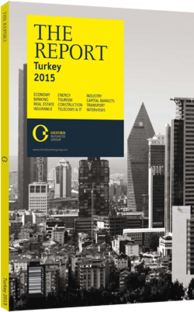Turkey's private pensions getting a boost from government matching of contributions
Private pensions showed significant growth in Turkey over the course of 2013 and 2014, following implementation of a new law that introduced government matching of contributions for private pension. With the new law, designed as an incentive scheme to encourage more contributions into the system, as of January 1, 2013 the government matches 25% of individual contributions to the pension system. Over the course of 2013 alone, 1m individuals signed on to the new pensions scheme, with over 5.1m pension savers registered by the end of 2014. The new rise in the market is a trend that is expected to continue, with a product now firmly established after a decade of slow but steady growth.
At the same time, going forwards, companies offering private pensions will likely have to think of new ways to develop the product, widening its appeal to Turkey’s expanding middle class. Maintaining profitability will also be a challenge. Nonetheless, with assets under management in pensions more than tripling in the last five years – to some €12.2m at end-2014 according to Turkey’s Pension Monitoring Centre – private pensions continue to be a major draw for investors looking at the Turkish market. The scheme also has positive implications for the nation’s savings rate, as well as for the development of its capital markets.
Three Pillars
Turkey has had a state social security system in place since the early post-second world war period. This has provided a first pillar, PAYG, defined benefit mandatory contribution schemes to cover retirement and other social security benefits. This underwent major reorganisations in 1999 and in 2006, when three existing state schemes were brought together under one roof, the General Directorate of Pensions Services at the Social Security Institution (SGK). At the same time, retirement ages and the minimum number of years of contribution were extended. The official retirement ages were set at 58 for women and 60 for men, with these being raised in stages to equalise at 65 in the year 2048. The motivation for the reforms was a common one – a rising level of the system’s deficit, with a shrinking premium base paying for several discretionary rises in the level of pension payments. There is also a second pillar of voluntary occupational pensions schemes, mainly among larger firms. These operate as either defined benefit or defined contribution schemes, or sometimes both, and are managed by the General Directorate for Non-profit Organisations, as they are run by non-profit foundations.
Savings Incentives
A key to the segment’s growth has been government action. Turkey had a domestic savings rate of just 14% of GDP at year-end 2013, with the third-lowest assets in pensions in the OECD the year before, at just 1.4% of GDP. The risks inherent in this have motivated the government’s efforts to switch from the previous system of giving a 15-35% tax deduction on gross income or minimum wage to private pensions, to matching 25% of individual contributions up to the minimum annual wage of TL14,850 (€5228).
Participants have access to the government contributions at an accelerating rate – 15% after the first three years, 35% after six years, 60% after 10 years and 100% at retirement age. At the same time, the tax taken at exit is levied on net investment returns, rather than on the total amount accumulated. The effect has been clear. In the first quarter of 2013, the number of participants in private pension schemes went up 9.8% over 2012, with 306,000 new contributors. By the end of the first year 1m new people had signed up for private pensions.
“These were big incentives,” Sezgi Biçe Özener, senior research analyst at Yapı Kredi Yatırım Equity Research, told OBG. “The private pension became the best method to save. In the future, it will continue to be attractive for participants and for insurance companies, with some of the latter now migrating into the private pensions business.” One drawback is that the government also imposed a cap on the fees companies can charge for providing private pension services, reducing them from 3.6% to 1.9%. Nevertheless, private pensions are among the most attractive aspects of the Turkish insurance market and may total TL240bn (€84.5bn) by 2023.
You have reached the limit of premium articles you can view for free.
Choose from the options below to purchase print or digital editions of our Reports. You can also purchase a website subscription giving you unlimited access to all of our Reports online for 12 months.
If you have already purchased this Report or have a website subscription, please login to continue.

